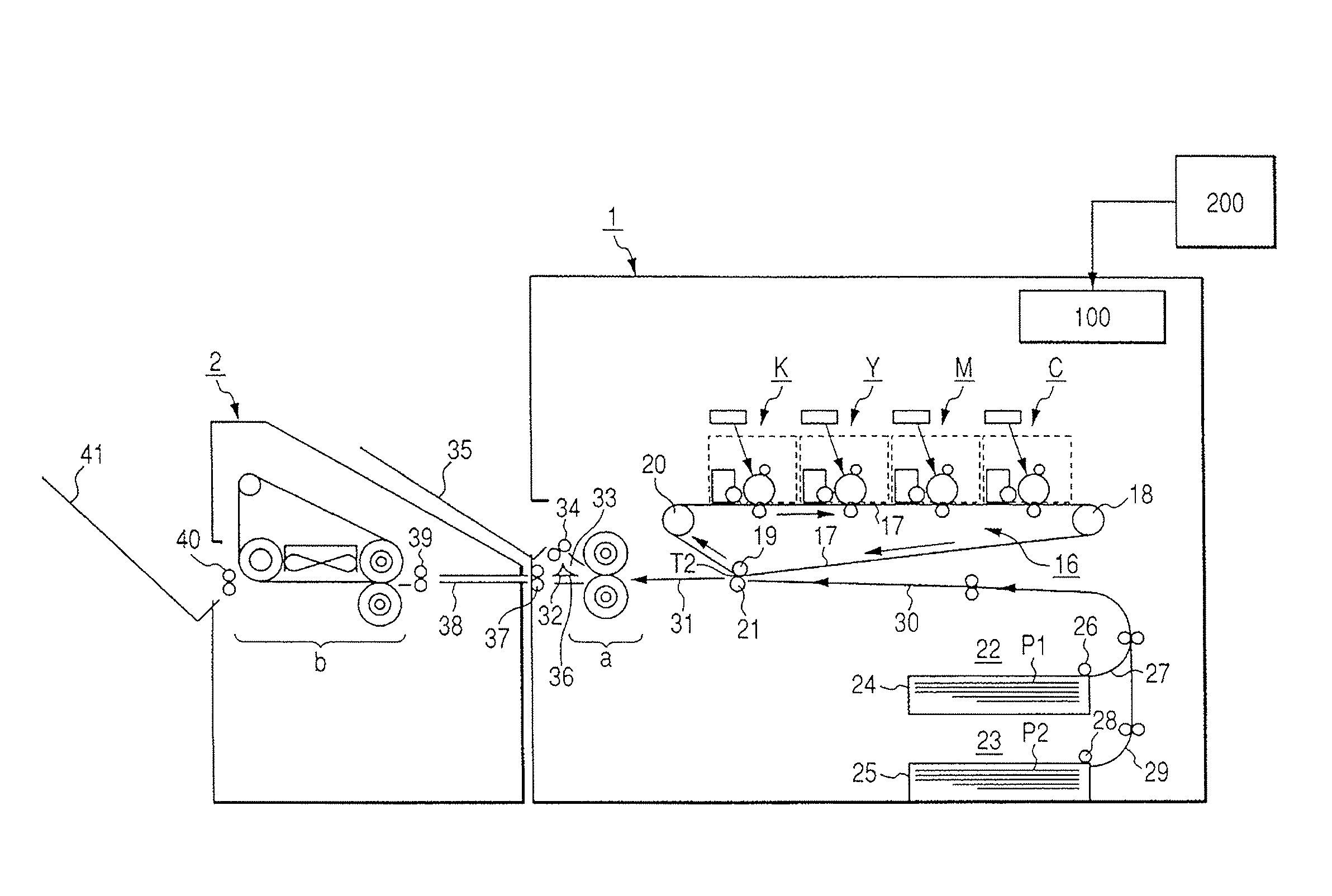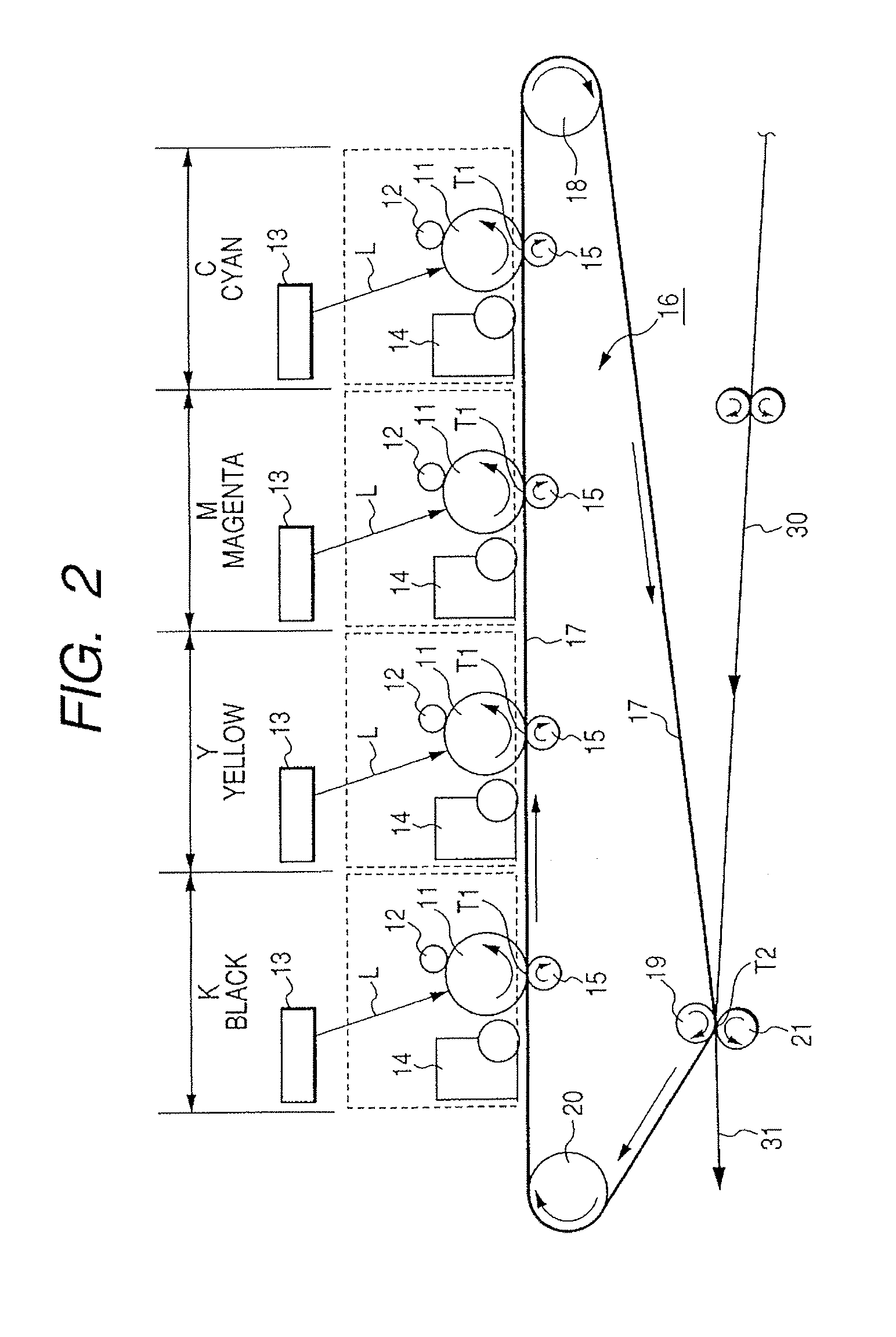Image forming apparatus
a technology of forming apparatus and forming tube, which is applied in the direction of electrographic process apparatus, instruments, optics, etc., can solve the problems of difficult suppression of the effect of space s, difficult to difficult to completely eliminate the defect of glossiness, etc., and achieve excellent toner image glossiness
- Summary
- Abstract
- Description
- Claims
- Application Information
AI Technical Summary
Benefits of technology
Problems solved by technology
Method used
Image
Examples
first embodiment
Mode
[0024](1) Overall General Description as to an Example of an Image Forming Apparatus
[0025]FIG. 1 is a schematic structural view of an image forming apparatus according a first embodiment mode of the present invention. The image forming apparatus includes an image forming apparatus main body (hereinafter, referred to as “apparatus main body”) 1 and a belt fixing device unit (i.e., glossiness applying device) 2. The belt fixing device unit 2 is connected on an outlet side of the apparatus main body 1. In this embodiment, the belt fixing device unit 2 is an optional apparatus as a housing separated from the apparatus main body 1, and is capable of outputting an image onto glossy dedicated paper such as a photograph and various types of sheets.
[0026]The apparatus main body 1 is an electrophotographic four-color full-color image forming apparatus (i.e., tandem color recording apparatus). An external host apparatus 200 such as a color image reading apparatus or a personal computer is ...
embodiment 1
[0099]In this embodiment, the pressing force applied between the fixing roller 51 and the pressure roller 52 of the first fixing device a was released, and the fixing roller 51 and the pressure roller 52 were spaced apart from each other. Then, the recording material P2 bearing the toner image was allowed to pass between the fixing roller 51 and the pressure roller 52 spaced apart from each other. Both the rollers 51 and 52 were rotationally driven at a surface speed (i.e., fixing speed) of 55 mm / s. The respective surface temperatures of the fixing roller 51 and the pressure roller 52 were controlled to be maintained at 175° C. By those settings, the pressing force is not applied to the toner image formed on the recording material P, and only the radiation of heat of the rollers is applied to the toner image. Thus, only the radiation of heat of the rollers is applied to the unfixed toner image, thereby making it possible to suppress dispersion of toner within the apparatus.
embodiment 2
[0100]In this embodiment, the pressing force applied between the fixing roller 51 and the pressure roller 52 of the first fixing device a was set to 300 N, and the respective surface temperatures of both the rollers were controlled to be maintained at 50° C. Both the rollers 51 and 52 were rotationally driven at the surface speed (i.e., fixing speed) of 55 mm / s. The first fixing device a controls a cooling fan (not shown) and heating by a heater included in the rollers to regulate the surface temperatures of both the rollers to be maintained at 50° C.
PUM
 Login to View More
Login to View More Abstract
Description
Claims
Application Information
 Login to View More
Login to View More - R&D
- Intellectual Property
- Life Sciences
- Materials
- Tech Scout
- Unparalleled Data Quality
- Higher Quality Content
- 60% Fewer Hallucinations
Browse by: Latest US Patents, China's latest patents, Technical Efficacy Thesaurus, Application Domain, Technology Topic, Popular Technical Reports.
© 2025 PatSnap. All rights reserved.Legal|Privacy policy|Modern Slavery Act Transparency Statement|Sitemap|About US| Contact US: help@patsnap.com



